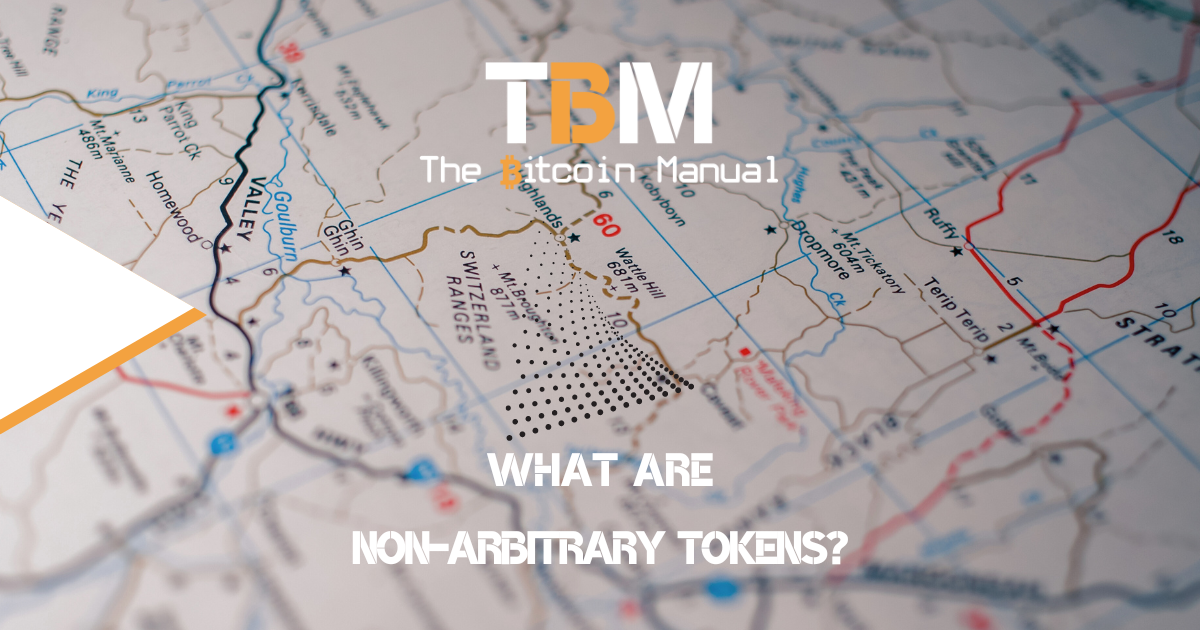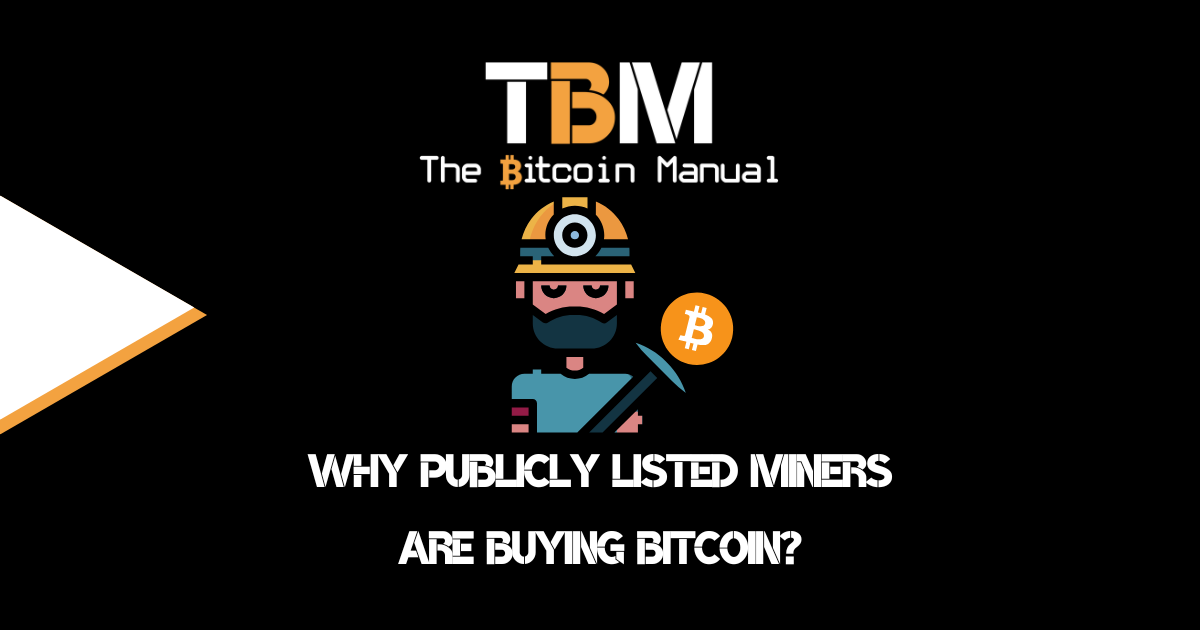Ah, Bitcoin, to many looking in from the outside, is seen as the Wild West of finance, the land of digital gold rushes, and the breeding ground for financial innovation that we still need to grasp fully. Having that level of caution and scepticism isn’t a bad thing.
Remember, don’t trust, verify.
A healthy approach to Bitcoin is telling yourself, I don’t know enough about this asset to get involved, and perhaps in the future, as I learn and as the tech matures, I will jump in when I feel it sufficiently de-risked. I am willing to sacrifice some upside for holding that belief.
I can respect that, and more power to you and your journey in learning about the asset; take your time. There is no rush, and don’t give into a sense of FOMO.
In my time in the Bitcoin space, I’ve found that this isn’t the thinking of the early cohorts. It is people who know enough about money or enough about technology but not enough about how they overlap. With that, they have just enough understanding to promote and get involved in things that are pretty stupid.
Sure, there are scammers, opportunists, grifters, influencers, and self-aware investors who want to take advantage of capital flows and trends. Still, they can only exist if the vast majority of participants are dumb money and bad traders.
There is no alternative, in altcoins
Then you get Bitcoin’s ugly step-sister, the altcoin market. This is a place where everyone who feels they were late to Bitcoin will roll the dice, trying to outperform the Bitcoin market in the smallest time frame possible, for the most part, mispricing the risk to an epic proportion.
Getting rekt in altcoins is a right of passage at this point, and it’s minted many a maxi in the process. Getting rekt is not limited to retail participants, businesses, miners, exchanges, or venture capital; no one is safe from a deep and long market correction and resulting bear market.
Altcoins are easy to reproduce, as evidenced by the ever-expanding list on coin tracking sites. We’ve. We’ve seen nearly infinite projects rehashing old ideas that were tried and failed on Bitcoin. Take the time to learn about Bitcoin’s history and pursue the early forum posts. You’ll see many altcoin ideas discussed and eventually dismissed as sound minds thinking about sound money reveal.
As Giacomo Zucco says, altcoin trends are just stuff we tried on Bitcoin, realised was stupid, and binned the idea, and someone comes along, finds it, and thinks they’ve discovered fire.
A bad idea and previous failures aren’t enough to stop coin creators and their venture capital backers from thinking they can strike it rich. Many of these ideas can attract funding, avoiding Testnet and allowing the public markets to ape in with real money and lose their shirts on “innovations” that make beanie babies look like sound investments.
Since these ideas and projects are easy to reproduce and can be rebranded for a new cohort or even the old guard who still have hopium left and have memories of goldfish, it means markets are inundated with new jargon for normies and altcoiners to fall for the same nonsense with a new wrapper.
As a Bitcoiner or long-time market follower, it’s easy to dismiss these blatant scams when you see them because you’ve seen them before.
Its a waste of time, but the normie and shitcoiner won’t listen to a simple it’s a scam; they want you to waste a few hours of your life explaining why their position is moronic, and even if you succeed; shitcoin Stockholm syndrome is real.
“Beware of false knowledge; it is more dangerous than ignorance.”
– George Bernard Shaw.
Brandolini’s law, also known as the bullshit asymmetry principle, also comes into play with the onus on you to refute this nonsense requiring far more effort than the altcoin promoter did in learning about the incorrect beliefs they hold.
So when you’re asked your opinion on X or Y coin or this or that trend, debunking becomes all so tiresome, and it can feel like throwing good energy after bad.
So, what exactly are NATs?
The last cycle made debunking the token myths easier because they were separate environments. Still, now that we’ve seen Ordinal theory comes to pass, the blurred lines between tokens and Bitcoin make it even harder to explain to the average investor why these tokens are nonsense and a waste of time.
What started with JPEGs on Bitcoin expanded to BRC-20 tokens and its various derivatives of JSON files embedded in the blockchain, crafting a new pump-and-dump market of secondary assets.
Anyway, that was a long rant, but let’s get down to the latest nonsensible token idea: Non-Arbitrary Tokens (NATs) on the Bitcoin blockchain. Reading some of the documentation feels like an insult to my intelligence, and this has to be the asspull of the century when it comes to creating a monetary policy.
A Non-Arbitrary Token (NAT) is a fungible token created using inscription transactions. Its supply is determined by a preselected trend found in Bitcoin blocks. The selected Bitcoin’s on-chain data triggers the ability to generate more inflation instead of arbitrary human decision-making.
The story behind NATS is DMT, or digital Matter Theory, a play on digital gold or digital commodities. The narrative suggests that no these tokens shouldn’t be seen as unregistered securities, which they are; they should be seen as a whole new thing since issuance isn’t totally controlled since you don’t create the pattern—you select it and let it run as blocks are added—no one has control over-issuance.
Imagine Beanie Babies, but instead of adorable (questionable) plush toys, they’re lines of code embedded into the Bitcoin blockchain, claiming that if some event pattern happens, it is a trigger to minting new supply.
These NATs can represent anything—a jpeg of a grumpy cat, a claim to ownership of your virtual yacht in a game you don’t play, digital real estate in the metaverse, or even a digital certificate for participating in a conference nobody remembers.
When you’re making things up as you go along, you might as well go big with the narrative; reality will not attract the exit liquidity; you have to promise the world and beyond.
{
"p": "tap",
"op": "dmt-mint",
"dep": "4d967af36dcacd7e6199c39bda855d7b1b37268f4c8031fed5403a99ac57fe67i0",
"tick": "nat",
"blk": "800000"
}
Example of a NAT token mint
Ordinals have no real ties to Bitcoin
Inscription-based tokens are dumb tokens, not only in the sense that they are stupid as investments but also in the practical ability to embed logic into them. They are just simple static scripts added to the blockchain, and a third-party indexer reads off these scripts and can include some off-chain execution.
While this token data is stored on the blockchain, the Bitcoin core client doesn’t recognise it as able to execute an action. Attempts have been made to find connections between arbitrary data and Bitcoin,
The first is rare sats, where a numbering scheme is added to satoshis in a block, and the community decides how they are valued; for example, the first Satoshi in that block’s numbering scheme is labelled uncommon since there is only one of these per block.
Random, I know, but stick with me here; it gets sillier.
You can find patterns in anything
NATs are trying to find creative ways to build tethers to Bitcoin by seeking out random patterns in blocks and tying an action to them; depending on how much inflation you’d like to trigger, you can choose a commonly occurring pattern or a rare one.
This doesn’t seem that non-arbitrary to me since someone is making a decision on the amount issued and when, but okay, what do I know?
Let’s say my coin increases in supply if a block has 2000 transactions or more, so each time a Bitcoin block is secured with 2000 transactions, boom, supply comes online. In NATs, the trend has to be on-chain, but it could be off-chain with an Oracle; for example, we could flip the Hoberman Switch Pitch Ball, and if it’s yellow, you release the next batch of inflation to claim through an inscription minting.
Now that supply can be accessed through the usual minting process of creating an inscription transaction; someone has to have a bot monitoring these trends to capitalise on securing that new supply. NATS adds a layer of gamification to the fair mint frenzy of token issuance.
NAT my cup of tea
Bitcoin itself isn’t exactly known for its lightning-fast transactions and minimal fees. We’re desperately looking for solutions to avoid using the limited block space and move transactions off-chain through a layered approach.
Now imagine cramming even more data onto this already congested system. Whenever a pattern emerges, you’d find speculators trying to randomly push through minting transactions to try and access secondary market token inflation.
It’s a recipe for failure.
If the NAT cannot hold its price and the issuance cost to mint is more than the claim and sell transactions, you now have a dead token on your hands, which will end up being the vast majority of these inscription-based tokens.
There’s the inherent absurdity of value in crypto; it will always be that way, and narratives change. Eventually, this trend will be left in the dust for something new. Basing your investment thesis on what you see shilled on Twitter or YouTube is a surefire way to clean out your wallet since it all hinges on the whims of the market, which, in the world of cryptocurrency, can be about as stable as a toddler on a sugar high.
Digital matter theory? It is more like lay off the Dimethyltryptamine
NATs on Bitcoin are a testament to human ingenuity – the ingenuity to take a perfectly functional system and duct tape a bunch of extra features to it for no added benefit, except for those selling you metadata for your hard-earned Bitcoin.
This is just another re-skin of sending me 1 Bitcoin, and I will send you two back, but with many extra steps.
At least you don’t end up with anything this time; you still have a private key with transaction history on it, and you can tell everyone you own a digital beanie baby tethered to a blockchain. Just don’t expect it to appreciate in value over the long term in US dollar terms, especially not in Bitcoin terms.
NATs are like novelty oversized sunglasses—sure, they get attention, but they’re impractical, expensive, and block your view of the far superior asset that is Bitcoin.
If, after all of this, you still want to get in on NAT projects like NAT CATs or buy digital real estate on BitMap, go right ahead; don’t let me stop you.
Welcome to dumbassville, population you, bro!




